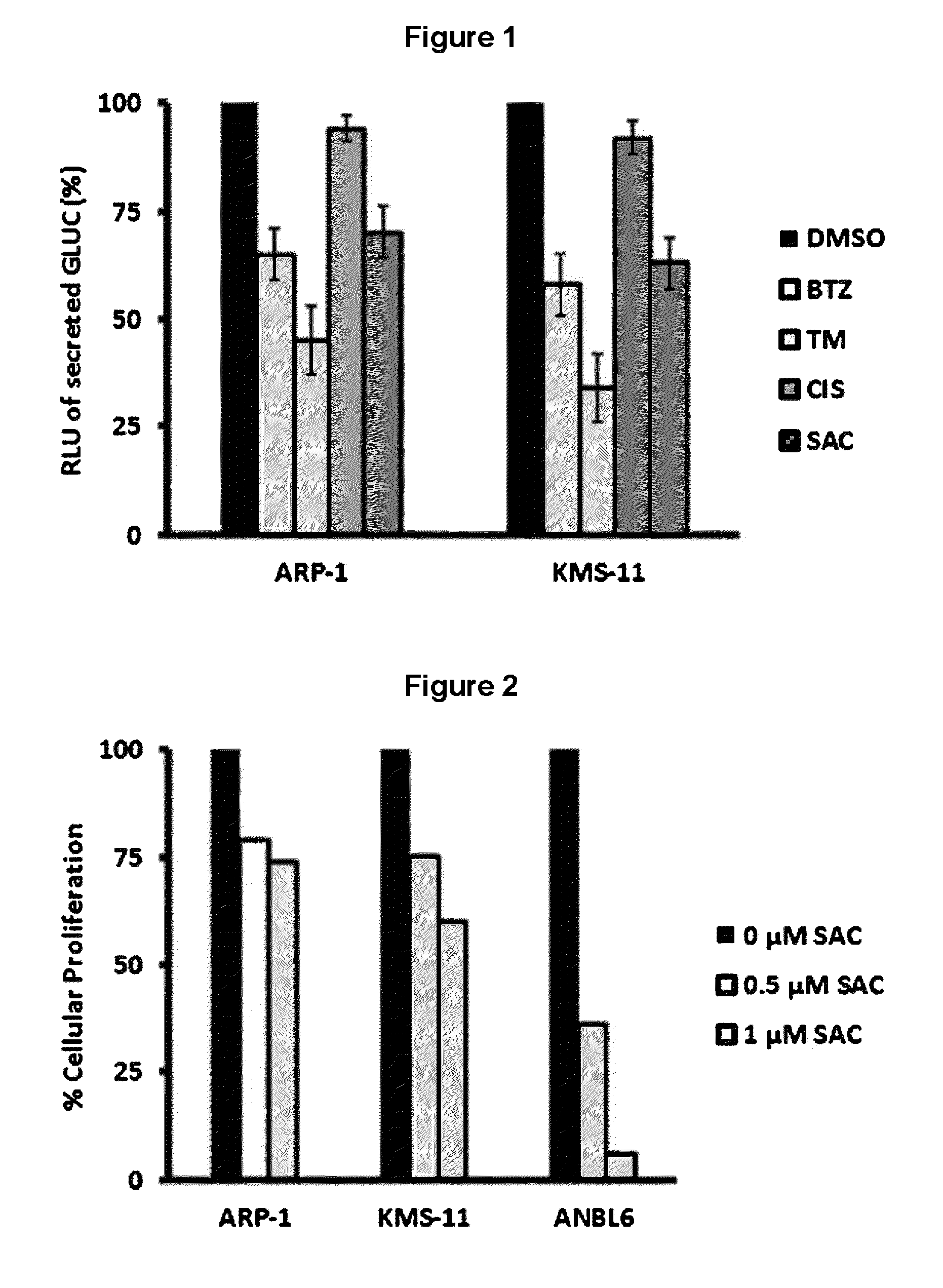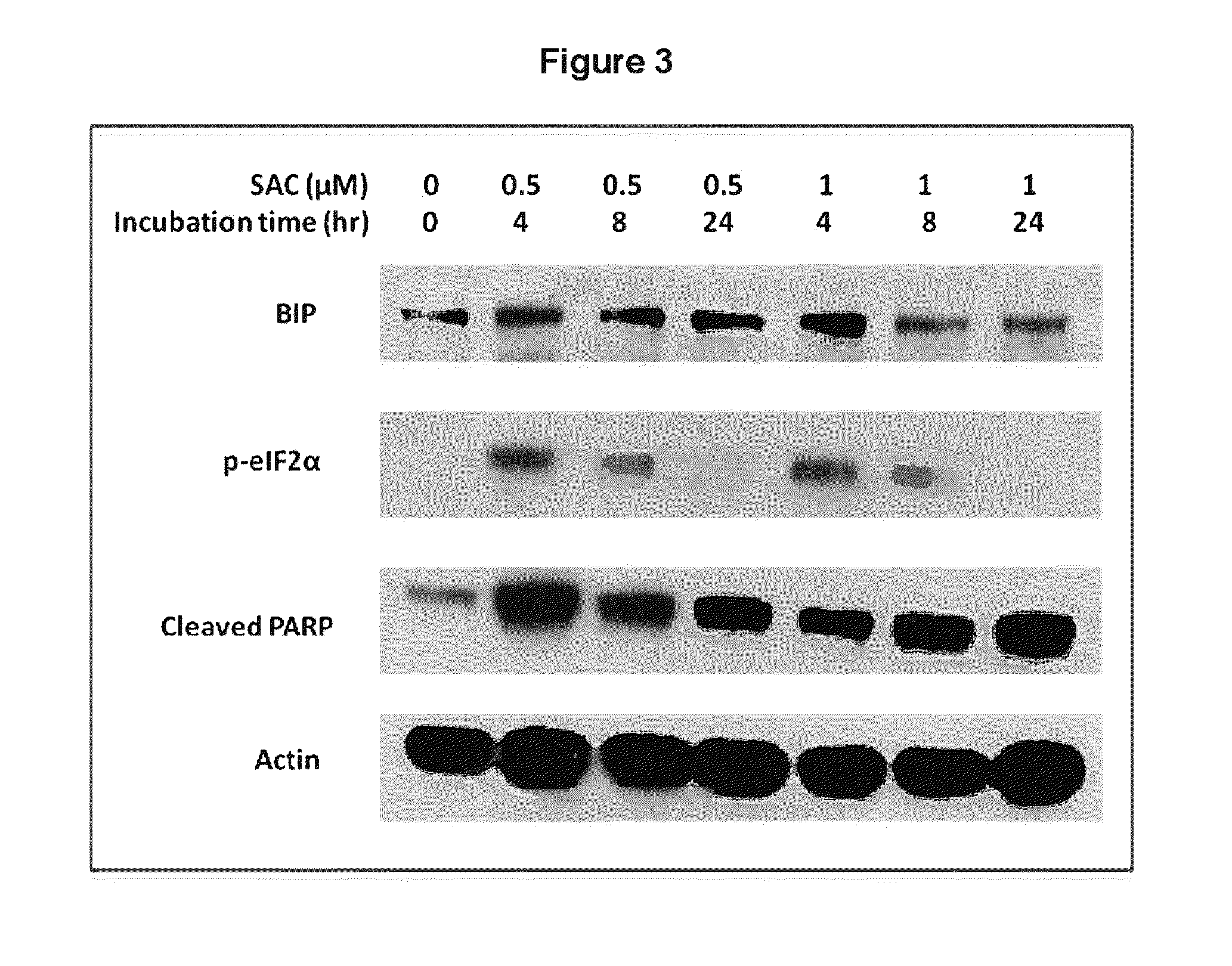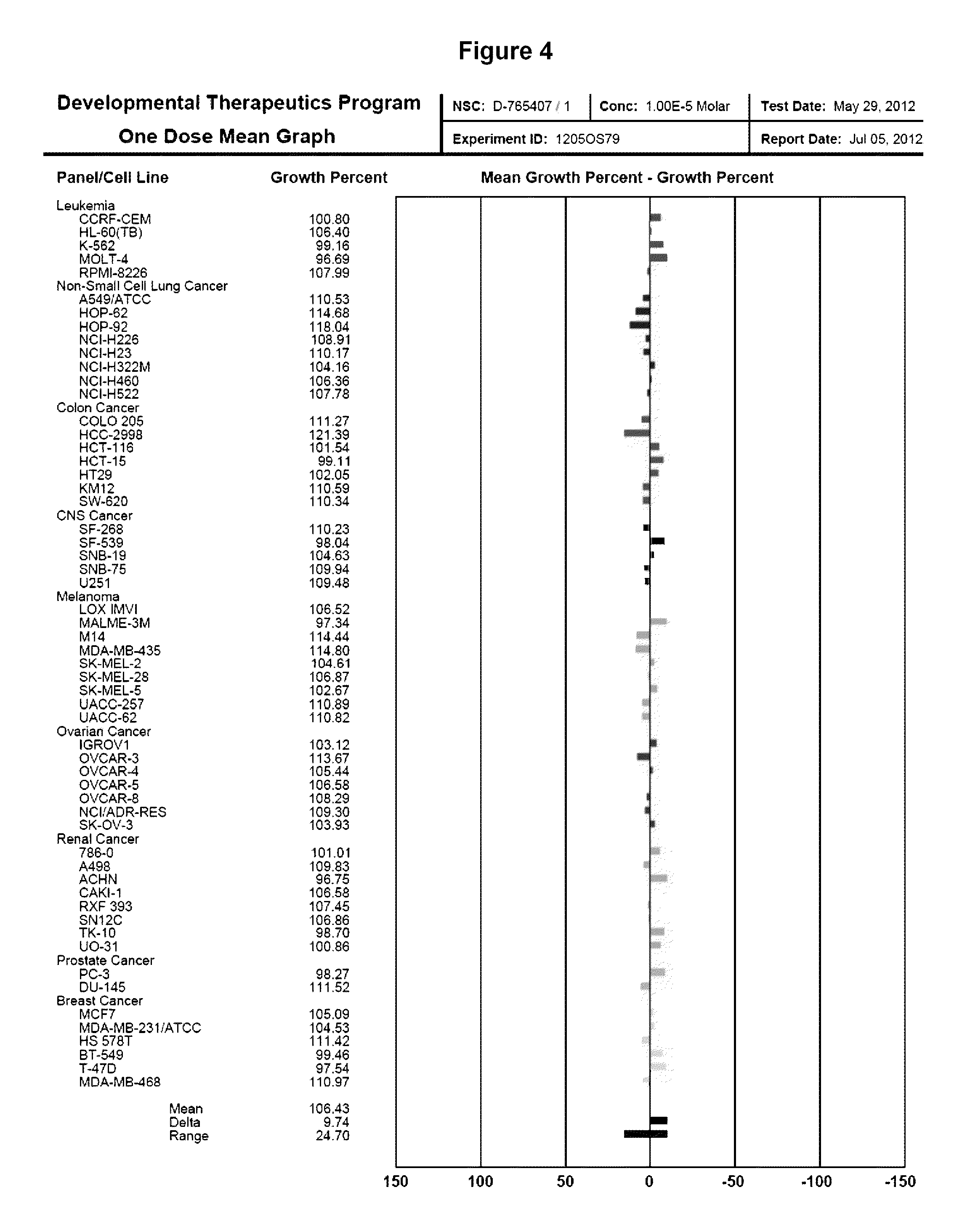Methods and agents for preventing and treating plasma cell dyscrasias
a plasma cell and dyscrasia technology, applied in the field of myeloproliferative disorders, can solve the problems of no accepted prevention or treatment strategy available, harmful side effects, and btz carries the potential for serious side effects, and achieve the effect of reducing the number of proliferating monoclonal plasma cells
- Summary
- Abstract
- Description
- Claims
- Application Information
AI Technical Summary
Benefits of technology
Problems solved by technology
Method used
Image
Examples
example 1
[0097]The present study identified SAC as a potent inhibitor of myeloma proteostasis as demonstrated by its ability to inhibit secretion of Gaussia luciferase (Glue), a naturally secreted luciferase that can be easily monitored in transfected cells through extracellular release of luciferase activity in real time [Badr et al. PLoS One 2, e571, 2007]. For screening, KMS11 and ARP1 cells were seeded in 96-well plates and treated with 5 μM of compounds from the Spectrum library (Microsource Discoveries) for 24 hours. Conditioned medium from each compound treatment was harvested to assay Gluc secretion alongside samples treated with DMSO alone, BTZ and TM as controls. Compounds of interest were considered to be those that inhibit Gluc secretion in both cell lines by at least 30% after 24 hours treatment. As shown in FIG. 1, 5 μM SAC inhibited Gluc secretion as effectively as 5 μM BTZ. For these studies, 10 μg / ml tunicamycin (TM) and 5 μM BTZ were used as positive controls since they are...
PUM
| Property | Measurement | Unit |
|---|---|---|
| myeloproliferative disorder | aaaaa | aaaaa |
| symptomatic myeloproliferative disorder | aaaaa | aaaaa |
| disorder | aaaaa | aaaaa |
Abstract
Description
Claims
Application Information
 Login to View More
Login to View More - R&D
- Intellectual Property
- Life Sciences
- Materials
- Tech Scout
- Unparalleled Data Quality
- Higher Quality Content
- 60% Fewer Hallucinations
Browse by: Latest US Patents, China's latest patents, Technical Efficacy Thesaurus, Application Domain, Technology Topic, Popular Technical Reports.
© 2025 PatSnap. All rights reserved.Legal|Privacy policy|Modern Slavery Act Transparency Statement|Sitemap|About US| Contact US: help@patsnap.com



